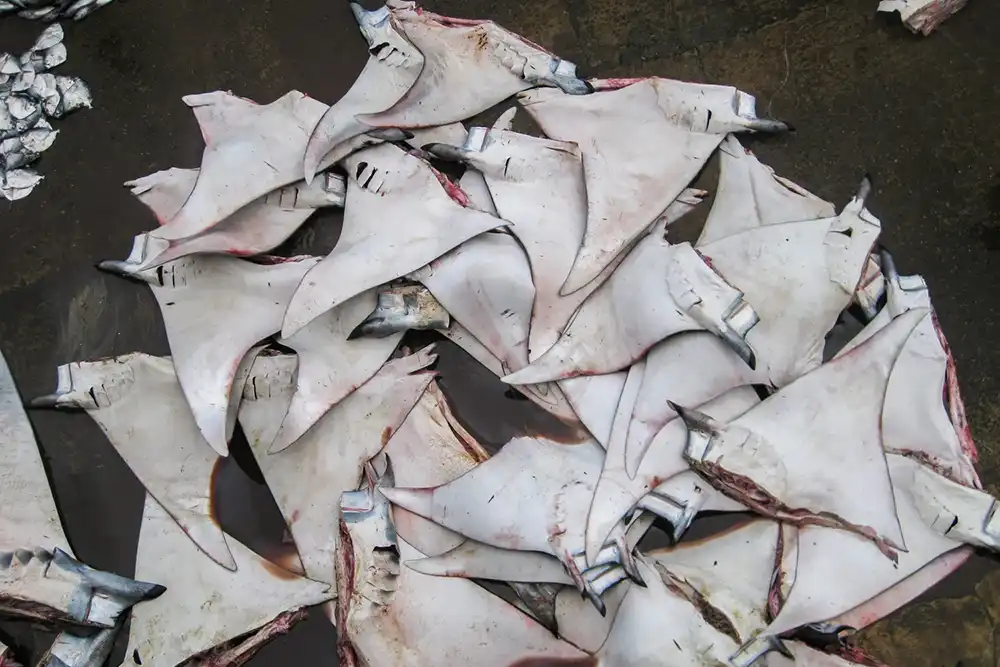
All ten species of manta and devil rays have been granted the highest level of protection under the Convention on International Trade in Endangered Species of Wild Fauna and Flora (CITES).
The decision to uplist the entire group to Appendix I was adopted by consensus, prohibiting all international commercial trade in manta and devil ray products across every ocean basin.
The news follows yesterday’s uplisting of oceanic whitetips to Appendix I in a landmark ruling for shark protection.
Manta and devil rays are filter feeders that use distinctive gill plates found in no other group of rays, and for which they are targeted for the Asian markets as a form of ‘traditional’ medicine, despite no scientific evidence supporting the claims.
Their biology makes them extremely vulnerable to population decline, as they are slow to grow and reach sexual maturity, reproduce infrequently, and their predictable seasonal aggregations expose them to overfishing.
Recent research led by the Manta Trust has shown that global trade in mobulid products has increasingly shifted online, prices have risen, and identifying processed products to species level remains challenging.
In addition to being consumed locally in at least 35 countries, manta and devil ray meat is also traded internationally, often dried and salted for transport. Combined demand for gill plates and meat has contributed significantly to steep population declines, local extinctions and ongoing overfishing.
Despite protections under CITES Appendix II, the Convention on Migratory Species and national legislation in more than 40 countries, populations of all manta and devil ray species have declined by more than 80 per cent — and in some cases up to 99 per cent — within one to two generations.

Global research led by the Manta Trust estimates that approximately 265,000 manta and devil rays are caught annually across 92 countries.
The uplisting to Appendix I is intended to close international trade routes and reduce demand-driven exploitation. Conservation groups note, however, that meaningful implementation will depend on strengthened national legislation, improved enforcement, better traceability and inclusive management approaches in key range states.
‘Today marks a turning point for the survival of manta and devil rays. Appendix I protection closes down international trade, reducing demand-driven incentives for overfishing,’ said Dr Guy Stevens, Chief Executive and Co-Founder of The Manta Trust. ‘Our team will continue to advance research on population estimates and trends, fisheries data, and bycatch mitigation and ensure accurate monitoring of the success of CITES Appendix I implementation.’
Nuno Barros, Fisheries & Policy Assistant Manager at The Manta Trust, said: ‘This is a momentous day for manta and devil rays, and the fact there was a consensus in the room shows that not only was the science clear, but that the world’s countries are standing up for the survival of our natural heritage.’
Rebecca Carter, Director of Conservation Programmes at The Manta Trust, said: ‘While we celebrate this unprecedented step, our work is far from over. The implementation of these protections will require vigilance, commitment, and collaboration across governments, communities, and enforcement agencies worldwide. Together, we can ensure that these ocean giants have a future in our seas.’


